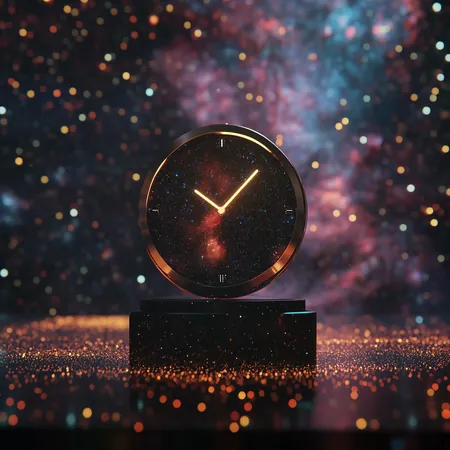
Groundbreaking Space Mission Uses Atomic Clocks to Test Einstein's Theories - Are Our Understandings Set to Change?
2024-11-06
Author: Sophie
Introduction
The ACES mission (Atomic Clock Ensemble in Space), an innovative project spearheaded by the European Space Agency (ESA), is embarking on a revolutionary journey to push the boundaries of our understanding of Einstein's theory of general relativity. By harnessing the power of atomic clocks aboard the International Space Station (ISS), this mission aims to explore fundamental physical constants and challenge our current notions of time and gravity.
Heart of the Mission
At the heart of ACES are two advanced atomic clocks: PHARAO (Projet d’Horloge Atomique par Refroidissement d’Atomes en Orbite) and SHM (Space Hydrogen Maser). Both of these clocks utilize the incredible precision of quantum transitions in atoms—particularly cesium and hydrogen—to achieve unprecedented levels of short-term stability and long-term accuracy. Together, they can produce a time signal that is incredibly precise, maintaining a fractional frequency stability of 1 × 10⁻¹⁶, allowing for the detection of the slightest deviations from expected behavior.
Global Clock Comparisons
By broadcasting accurate time signals to ground stations worldwide, ACES sets the stage for a global network of clock comparisons, capable of refining time standards and contributing to a field known as "chronometric geodesy." This field enables researchers to measure minute variations in gravitational potential across the Earth, thus shedding light on not only our planet's structure but also potentially offering insights into elusive phenomena like dark matter.
Testing Einstein's Legacy
Einstein's groundbreaking theory asserts that gravity is not merely a force but a curvature of spacetime—an idea that has shaped our understanding of the universe. One consequence of this theory is gravitational redshift, where time appears to slow down in stronger gravitational fields. For instance, clocks nearer to massive objects like Earth tick more slowly than those further away in space, demonstrating the intricate relationship between time and gravity.
The ACES mission seeks to test these theories in a practical setting. By comparing time measurements from the ISS with those on Earth, ACES aims to observe and quantify gravitational redshift with unmatched precision. If successful, this mission could either validate Einstein's predictions or potentially discover new phenomena that challenge established physics, leading to revolutionary advancements in our understanding of the universe.
High-Stakes Science and Technological Challenges
While the mission promises extraordinary scientific discoveries, it also faces significant technical hurdles. The precision required for PHARAO and SHM clocks necessitates rigorous calibration to overcome difficulties inherent in their operation, such as atomic collisions and fluctuations in environmental conditions. Even the slightest temperature variations can impact their performance, requiring sophisticated control systems to ensure stability.
Furthermore, effective communication between space and ground—essential for the global clock network—must address potential signal degradation that could arise during transmission. Innovative mitigation strategies are key in preserving the integrity of data over vast distances.
Implications of the Mission
The successes or failures of the ACES mission could have far-reaching implications. A validation of general relativity could bolster confidence in current technologies, from GPS to telecommunications, which depend heavily on precise timekeeping. Conversely, discovering anomalies could usher in a new era of physics, reshaping our understanding of gravity and the cosmos itself.
Conclusion
In a world where time is of the essence, ACES stands as a critical test of our scientific theories, embodying humanity's relentless pursuit of knowledge. As it embarks on its operational phase, only time will tell what revelations lie ahead for our grasp of reality. Stay tuned for updates—this mission could redefine everything we thought we knew about time and space!









 Brasil (PT)
Brasil (PT)
 Canada (EN)
Canada (EN)
 Chile (ES)
Chile (ES)
 España (ES)
España (ES)
 France (FR)
France (FR)
 Hong Kong (EN)
Hong Kong (EN)
 Italia (IT)
Italia (IT)
 日本 (JA)
日本 (JA)
 Magyarország (HU)
Magyarország (HU)
 Norge (NO)
Norge (NO)
 Polska (PL)
Polska (PL)
 Schweiz (DE)
Schweiz (DE)
 Singapore (EN)
Singapore (EN)
 Sverige (SV)
Sverige (SV)
 Suomi (FI)
Suomi (FI)
 Türkiye (TR)
Türkiye (TR)